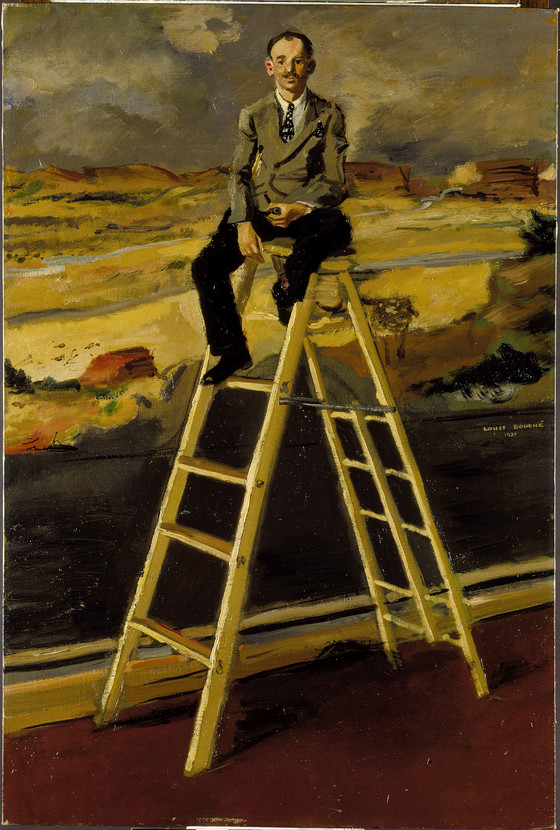In 1937 Bouché won the Treasury Section competition to paint a mural on the rear wall of the auditorium of the Department of the Interior Building in Washington, D.C....
In 1937 Bouché won the Treasury Section competition to paint a mural on the rear wall of the auditorium of the Department of the Interior Building in Washington, D.C. This commission was one of the most sought-after awards of the New Deal projects and was covered extensively by the press. Bouché created a three-part mural of the landscape of the Far West (see illustration). The figure in The Mural Assistant sits in front of the incomplete Interior Building mural. The figure’s placement is somewhat ambiguous since the mural does not at first appear to be a painting. Although there are photographs in the Bouché papers of the artist sitting on a ladder in front of his mural, just as in the painting, the figure in The Mural Assistant is not the artist.
According to Bouché’s daughter, she was supposed to pose for this painting but became dizzy and was replaced by her uncle, Milton Wright. Published accounts give a different version of the circumstances, however: Bouché, who was always ready to see the humor in ordinary scenes, thought his small brother-inlaw seemed ludicrous sitting atop the ladder and so decided to paint him. Wright is situated before the center of the landscape where several deer are sketched in. The figures of the Native American and White Man overlooking the land in the extreme left of the mural are not included. Nor had Bouché yet drawn in the medallions with the symbols of the Department of the Interior in the border along the bottom of the mural. Its incomplete state gave Bouché the opportunity to paint the landscape background of the easel painting in broad, full strokes. One can see in their application the artist’s love of the sensuous qualities of the medium, which brought life to Bouché’s seemingly drab genre scenes. This is especially true in paintings such as The Mural Assistant, which has a palette limited primarily to quiet grays, beiges, and ochers.
More...
